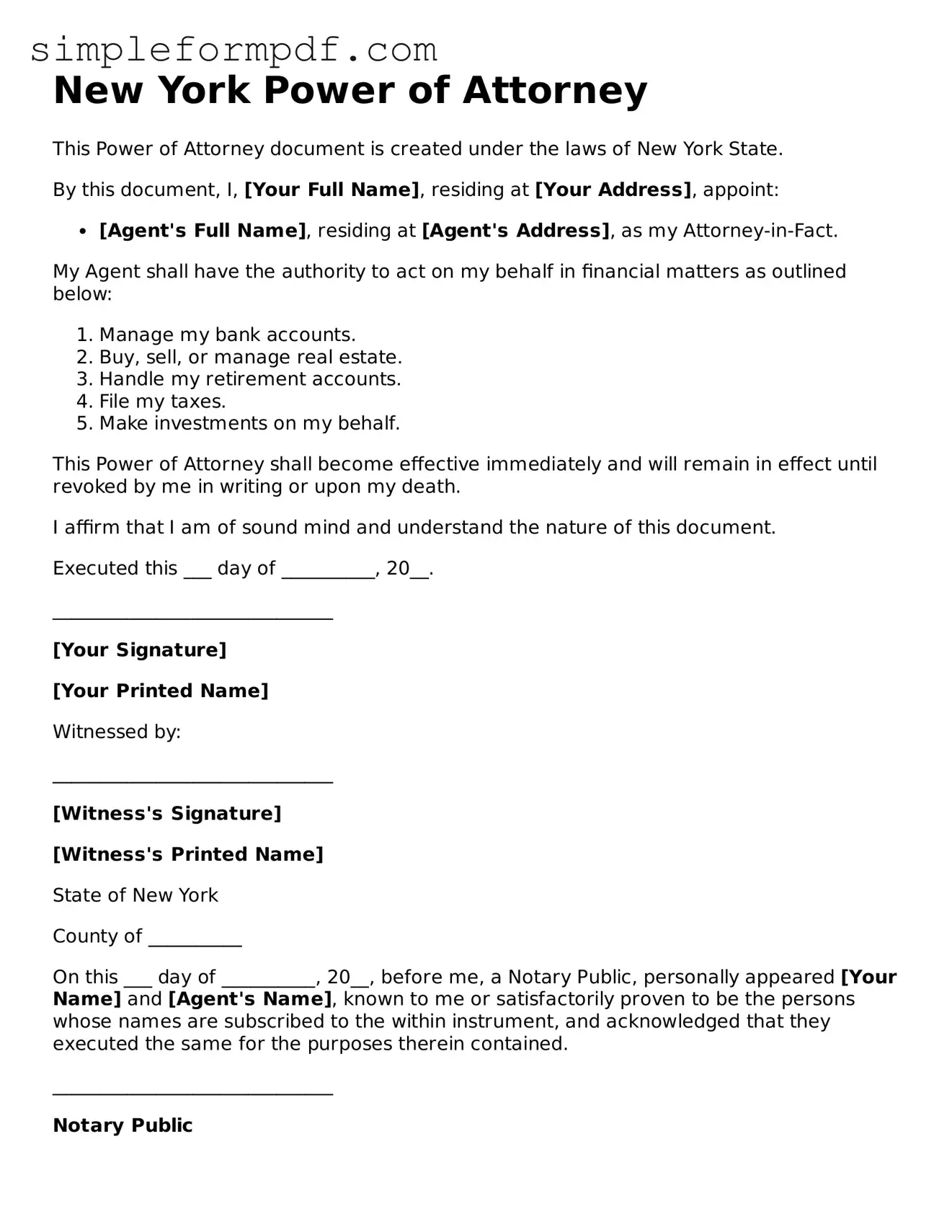New York Power of Attorney
This Power of Attorney document is created under the laws of New York State.
By this document, I, [Your Full Name], residing at [Your Address], appoint:
- [Agent's Full Name], residing at [Agent's Address], as my Attorney-in-Fact.
My Agent shall have the authority to act on my behalf in financial matters as outlined below:
- Manage my bank accounts.
- Buy, sell, or manage real estate.
- Handle my retirement accounts.
- File my taxes.
- Make investments on my behalf.
This Power of Attorney shall become effective immediately and will remain in effect until revoked by me in writing or upon my death.
I affirm that I am of sound mind and understand the nature of this document.
Executed this ___ day of __________, 20__.
______________________________
[Your Signature]
[Your Printed Name]
Witnessed by:
______________________________
[Witness's Signature]
[Witness's Printed Name]
State of New York
County of __________
On this ___ day of __________, 20__, before me, a Notary Public, personally appeared [Your Name] and [Agent's Name], known to me or satisfactorily proven to be the persons whose names are subscribed to the within instrument, and acknowledged that they executed the same for the purposes therein contained.
______________________________
Notary Public
